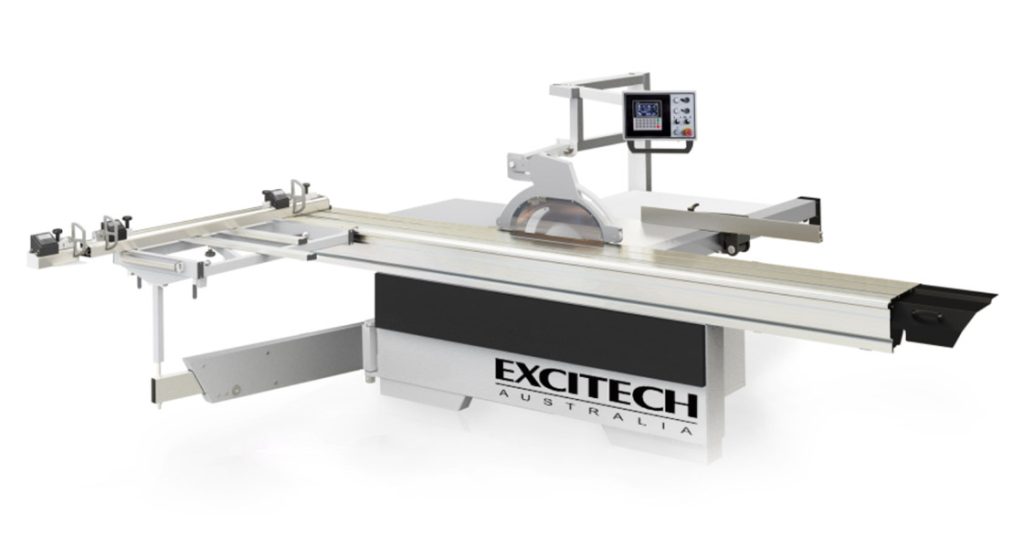How are Panel Saws Used in Carpentry

Panel saws stand as the unsung heroes of carpentry workshops around the world. These machines help ensure the precision and efficiency crucial to crafting fine woodwork. In the world of carpentry, where accuracy and speed are paramount, panel saws play a pivotal role.
This article aims to delve into the intricate workings of panel saws, exploring their types, functionalities, and other indispensable roles in the craft of carpentry.
What are Panel Saws?
Panel saws are specialised cutting tools designed primarily for cutting large sheets of materials like wood, plywood, and acrylic with utmost precision. Unlike traditional hand saws, panel saws offer the advantage of automated, accurate cuts, making them indispensable in commercial woodworking operations. Not only are they accurate, but panel saws also work quickly, boosting productivity.
Types of Panel Saws
Panel saws come available in a range of styles, including the following:
- Vertical Panel Saws: Vertical panel saws are a popular choice in workshops where space is limited. They feature a vertically oriented blade that moves along a guide rail. This design allows for efficient cutting of large panels in a relatively small footprint. These saws are ideal for cross-cutting and rip-cutting sheet materials, offering precise and clean cuts with minimal effort.
- Horizontal Panel Saws: Horizontal panel saws are larger and more robust, designed for high-volume cutting operations. They feature a horizontal cutting arrangement, where the material is placed on a stationary bed and pushed through a horizontally mounted blade. These saws excel in cutting large panels with unparalleled accuracy and speed, making them indispensable in industrial woodworking settings.
- Sliding Table Panel Saws: Sliding table panel saws combine the best of both worlds, offering the versatility of a traditional table saw with the precision of a panel saw. They feature a sliding table that allows the material to move smoothly past a fixed blade. This design enables precise cross-cuts and rip cuts on large panels, making it a favorite among carpenters who demand versatility and accuracy in their workflow.
Which Benefits do Panel Saws Offer?
- Dimensional Accuracy: One of the primary advantages of panel saws is their ability to deliver precise cuts consistently. In carpentry, where millimeter accuracy can make or break a project, panel saws ensure that each cut is uniform and exact, resulting in seamless assemblies and impeccable finishes.
- Easy to Use: Panel saws are easy to use, although a little practice is often required. In many cases, the saws are combined with computers, automating tasks and ensuring outstanding results. Ease of use also means less training, reducing costs and decreasing downtime.
- Increased Efficiency: Panel saws significantly improve the efficiency of woodworking operations by streamlining the cutting process. With their ability to handle large sheets of material effortlessly, carpenters can cut multiple pieces in a fraction of the time it would take with manual tools, thus boosting productivity.
- Versatile Applications: From cutting plywood for cabinet making to slicing melamine boards for shelving units, panel saws find a wide range of applications in carpentry. Their versatility allows carpenters to tackle diverse projects with ease, whether it’s creating intricate joinery or producing mass-produced components.
- Safety: Panel saws prioritise safety with features such as blade guards, emergency stop mechanisms, and integrated safety switches. These safety measures not only protect the operator from potential hazards but also promote a secure working environment conducive to efficient production.
Tips for Optimal Performance
- Blade Selection: Choosing the right blade is crucial for achieving clean cuts and prolonging the lifespan of the saw. Carbide-tipped blades are ideal for cutting wood and plywood, while diamond-tipped blades are better suited for cutting abrasive materials like acrylic.
- Staff Training: Most equipment will take some training, and panel saws are no exception. Training will ensure users can operate the machine effectively, boosting quality and quantity. Providing training will also help to protect your staff against potentially serious injuries.
- Regular Maintenance: To ensure peak performance, panel saws require regular maintenance, including blade sharpening, lubrication of moving parts, and alignment checks. Neglecting maintenance can lead to diminished cutting quality and premature wear of components.
- Proper Material Handling: Proper material handling is essential to maximise the efficiency and safety of panel saws. Always ensure that the material is securely supported and aligned before making a cut to prevent kickback and ensure accurate cuts.
- Effective Placement: It’s best to locate this saw in a place that’s easy to access. Effective placement will not only help productivity, but will also help prevent damage.
Conclusion
In the realm of carpentry, where precision and efficiency reign supreme, panel saws emerge as indispensable tools for achieving flawless results. Whether it’s crafting bespoke furniture pieces or mass-producing cabinetry, panel saws streamline the cutting process, allowing carpenters to elevate their craft to new heights.
By understanding the types, functionalities, and best practices associated with panel saws, carpenters can unlock their full potential and embark on a journey of unparalleled craftsmanship. With their ability to ensure precise cuts, enhance efficiency, and prioritise safety, panel saws stand as the cornerstone of modern carpentry workshops, empowering craftsmen to bring their creative visions to life with unmatched precision and finesse.
If you have any questions regarding these woodworking machines and their benefits, then get in touch with the team at Excitech and we will be happy to help. Our friendly and professional team will also be happy to help should you have other related questions.
